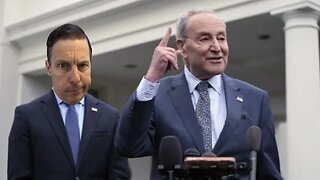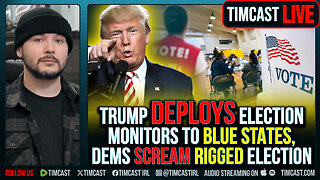Premium Only Content

MLB’s Speed Fix: Did They Kill the Game?
#BaseballRuined #MLBHotTake #SpeedKillsStrategy #OldSchoolVsNewSchool #PitchClockDebate #ShiftBanControversy #MLBChanges #BaseballStrategy #FanEngagement #PaceOfPlay #SportsTalk #MLB2025
Pace-of-play rules like the pitch clock and the defensive shift ban prioritize speed and continuous action. Leagues and organizers implement these measures to reduce downtime, tighten game timings, and create a more predictable, TV-friendly product. Faster innings and shorter games are positioned as solutions to declining attention spans and an increasingly competitive entertainment landscape.
Critics argue these edicts remove important layers of strategy from the game. The shift ban eliminates a defensive tactic that neutralized pull-heavy hitters, forcing managers and players to rethink positioning and roster construction. The pitch clock constrains pitchers’ and batters’ routines, reducing the psychological cat-and-mouse that produced late-inning stall tactics and gave pitchers space to reset between batters. Those critics maintain that strategy is not merely ornamentation but a core dimension of contest and skill.
Supporters counter that the rules revive engagement and accessibility for a broader audience. Shorter games and steady action make baseball easier to watch live and on broadcasts, improving retention for casual fans and younger viewers. Pace limits also push teams toward more athletic, multi-positional players and emphasize skill sets that produce action, running, contact hitting, and quick defensive reactions, thereby modernizing the spectacle without necessarily lowering competitive quality.
The practical effects are mixed but instructive. Teams adapt by changing player development priorities and in-game decision-making, producing emergent strategies that critics overlooked, such as increased emphasis on pitch efficiency and lineup flexibility. Viewership metrics and attendance trends show improvements in some markets, but purists note that metrics cannot fully capture the lost nuance of time-tested tactics. Rule changes therefore shift where strategy lives rather than eliminate it outright.
The debate ultimately balances competing values: preserving the deep strategic traditions that satisfy devoted fans and evolving the game to attract and retain new audiences. Reasonable policy design recognizes both impulses by calibrating rules, monitoring outcomes, and allowing room for teams to innovate within new constraints. The sport’s long-term health depends on maintaining competitive integrity while ensuring that each game remains compelling for a diverse and changing audience.
-
 1:54:42
1:54:42
The Quartering
2 hours agoFood Stamp Riots Are Coming, New Charlie Kirk Assassin Discord Messages Leak & Console Wars End!
112K43 -
 16:09
16:09
iCkEdMeL
3 hours ago🔴 LIVE: Tyler Robinson Pretrial Hearing in Charlie Kirk Assassination Case
3.07K1 -
 1:11:50
1:11:50
DeVory Darkins
4 hours agoDemocrats left scrambling after USDA issues NIGHTMARE Update
148K126 -
 21:05
21:05
Stephen Gardner
3 hours ago🔥Trump Drops NIGHTMARE NEWS for Democrats!!!
22.9K108 -
 LIVE
LIVE
Owen Shroyer
2 hours agoOwen Report - 10-27-2025 - Trump Secures Trade Deals Ahead Of Meeting With Xi
1,065 watching -
![[Ep 778] NYC Embraces Communism, Argentina Rejects It | Newsom Lies; As Always](https://1a-1791.com/video/fwe2/34/s8/1/w/y/k/u/wykuz.0kob-small-Ep-778-NYC-Embraces-Communi.jpg) LIVE
LIVE
The Nunn Report - w/ Dan Nunn
1 hour ago[Ep 778] NYC Embraces Communism, Argentina Rejects It | Newsom Lies; As Always
155 watching -
 1:09:36
1:09:36
Sean Unpaved
4 hours agoBrian Kelly's Boot From LSU, NFL Week 8 Snoozefest, & CFB's Week 9 Upset Rodeo
18.3K2 -
 1:04:35
1:04:35
Jeff Ahern
2 hours agoMonday Madness with Jeff Ahern
3.36K1 -
 1:03:58
1:03:58
Timcast
4 hours agoTrump DEPLOYS Election Monitors To Blue States, Democrats SCREAM RIGGED ELECTION
174K145 -
 2:07:27
2:07:27
Steven Crowder
7 hours agoWho Belongs: What the Future of the American Right Wing Looks Like
407K313